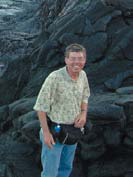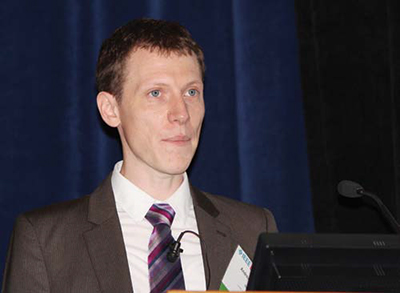
Doug Lung
Over a decade ago, when broadcasters were planning and implementing the current generation of DTV broadcasting, the IEEE’s Broadcast Technology Symposium included papers debating different modulation methods, the design of adaptive equalizers for improved 8-VSB reception, the design of transmit and receive antennas for 8-VSB and much more. Those were exciting times. At this year’s Symposium, held outside the Washington D.C. area for the first time in its 60-plus-year history, I detected excitement growing over the DTV system being developed as the successor to the 8-VSB/MPEG- 2 based system.
This month I’ll briefly discuss some of the papers at the symposium held in San Diego in October. See the IEEE Broadcast Technology Society’s web page (http://bts.ieee.org) for information on how to access the virtual Symposium archive.
LTE BROADCAST
The Symposium started with a tutorial on Future Television Technology. In the morning session the eMBMS/LTE (LTE Evolved Multimedia Broadcast Multicast Service), DVB-T2 and CMMB-NGB-W transmission techniques were dissected.

Andrew Murphy from BBC R&D discussed “Beyond T2” at this year’s IEEE-BTS. During his presentation on LTE Broadcast and eMBMS from the physical layer to the application environment, Kent Walker from Qualcomm offered up graphs showing that single frequency networks give LTE Broadcast (point-to-multipoint) an advantage over unicast (one-to-one) even for two users at 700 MHz because the broadcast mode allows use of an SFN, reducing interference between cells.
LTE Broadcast can use QPSK, 16-QAM and 64-QAM COFDM with efficiency up to 3.2 bps/Hz. At present eMBMS can use up to 60 percent of the channel bandwidth if frequency division duplex (FDD) is used and up to 50 percent for time division multiplex (TDD). In LTE Release 12, 256-QAM will be available for unicast. A dedicated carrier for eMBMS (100 percent eMBMS) is defined at the physical layer but Walker noted that it is currently incomplete at upper layers. Control information currently sent as unicast has to be converted to multicast/ broadcast.
A potential enhancement to LTE Broadcast/ eMBMS is increasing the duration of the cyclic prefix. As I’ve explained in previous articles on COFDM, this would allow the system to handle longer multipath, reducing the number of transmitter sites required to cover an area without self interference. As currently implemented, it is unlikely broadcasters would be able to justify the investment in multiple transmissions sites to allow use of LTE eMBMS. If sufficient signal strength is available, other enhancements could increase efficiency (more bps/Hz), perhaps by using 256-QAM and reducing the percentage of bandwidth used for reference symbols and the cyclic prefix.
The professional video industry's #1 source for news, trends and product and tech information. Sign up below.
Walker said they found the “HATA Model for Suburban Areas” works best for coverage prediction in most U.S. environments. Since I’m focusing on RF in this column I won’t cover Walker’s discussion of the application environment but those interested in using HTML5 and DASH in a broadcast environment should seek out his presentation.
BEYOND T2
Andrew Murphy from BBC R&D covered DVB-T2. I’ve covered some of the information in his tutorial in previous columns and will provide more in a future article. Murphy showed graphics and a shot of a signal analyzer to show how Physical Layer Pipes (PLP), Future Extension Frames (FEF) and MISO are implemented in DVB-T2.
He looked at what we can expect “Beyond T2,” including higher order constellations (4096-QAM for cable), Time and Frequency Slicing (TFS), Multiple Input Multiple Output (MIMO) and Non-Uniform constellations (NUQAM). When comparing NUQAM and rotated constellations, Murphy said the non-uniform spacing in NUQAM adds randomness and improves performance by about 0.7 dB. For rooftop reception dependent on the Gaussian noise limit, NUQAM is best. However, for handling echoes and frequency fading in a mobile or portable configuration, the rotated constellation is a better choice.
One of the most intriguing papers presented at the symposium was “Point-to-MultiPoint-Overlay (P2MP) for LTE-Advanced using DVB-T2 Future Extension Frames,” by Frieder Juretzek and Ulrich Reimers, both from the Institute for Communications Technology at Technische Universitaet Braunschweig in Germany. In his presentation, Juretzek showed how video from a high tower/high-power broadcast transmitter using DVB-T2 could be included in the services available on an LTE-based receiver using the communication standard LTE-Advanced carrier aggregation capability. LTE has a specific framing structure and synchronization with the other LTE channels is required. Using DVB-T2’s Future Extension Frames (FEF) with LTE isn’t trivial; I won’t try to cover it in this article but may in a future article if readers are interested.
Because system information and synchronization is sent on the mobile network operator’s LTE carrier, any use of this technology will depend on cooperation with these operators. That could be difficult to achieve, but one advantage is that P2MP broadcast overlay signals from broadcasters could be shared by different operators, so setting up a service with one operator would not preclude others from offering the service later.
Juretzek was asked if an additional receiver would be required in the mobile device, to which he replied that the goal is to have one receiver based on LTE. When questioned about the impact that adding LTE FEF to the DVB-T2 signal would have on a conventional DVB-T2 receiver, Juretzek replied that more research is needed.
The system was demonstrated at IBC using a software-defined radio. I wasn’t able to find details on the DVB-T2 SDR they used but there is a SourceForge page for “DVB-T2 Common Simulation Platform” at http://bit.ly/Id2LZZ. More on the P2MP tower overlay approach can be found in Ulrich Reimers’ article at http://bit.ly/18BLt34 and his presentation at http://bit.ly/1aT2sNM.
Getting the required cooperation from wireless carriers to include a “tower overlay system” is going to be difficult, if not impossible here in the U.S., but it shows the importance of adopting a next-generation broadcast platform with the flexibility to provide such a win-win solution to both broadcasters looking to get into mobile devices and wireless carriers looking for a way to offload video from their networks while retaining control of what services are delivered to customers.
My coverage of the 2013 IEEE Broadcast Symposium will continue next month. I’ve postponed my further analysis of variation in predicted coverage in TVStudy when different antenna parameters/default are selected. I’m doing some additional studies after discussing this at the Symposium.
Comments are welcome. Email me at dlung@transmitter.com.

Doug Lung is one of America's foremost authorities on broadcast RF technology. As vice president of Broadcast Technology for NBCUniversal Local, H. Douglas Lung leads NBC and Telemundo-owned stations’ RF and transmission affairs, including microwave, radars, satellite uplinks, and FCC technical filings. Beginning his career in 1976 at KSCI in Los Angeles, Lung has nearly 50 years of experience in broadcast television engineering. Beginning in 1985, he led the engineering department for what was to become the Telemundo network and station group, assisting in the design, construction and installation of the company’s broadcast and cable facilities. Other projects include work on the launch of Hawaii’s first UHF TV station, the rollout and testing of the ATSC mobile-handheld standard, and software development related to the incentive auction TV spectrum repack. A longtime columnist for TV Technology, Doug is also a regular contributor to IEEE Broadcast Technology. He is the recipient of the 2023 NAB Television Engineering Award. He also received a Tech Leadership Award from TV Tech publisher Future plc in 2021 and is a member of the IEEE Broadcast Technology Society and the Society of Broadcast Engineers.
